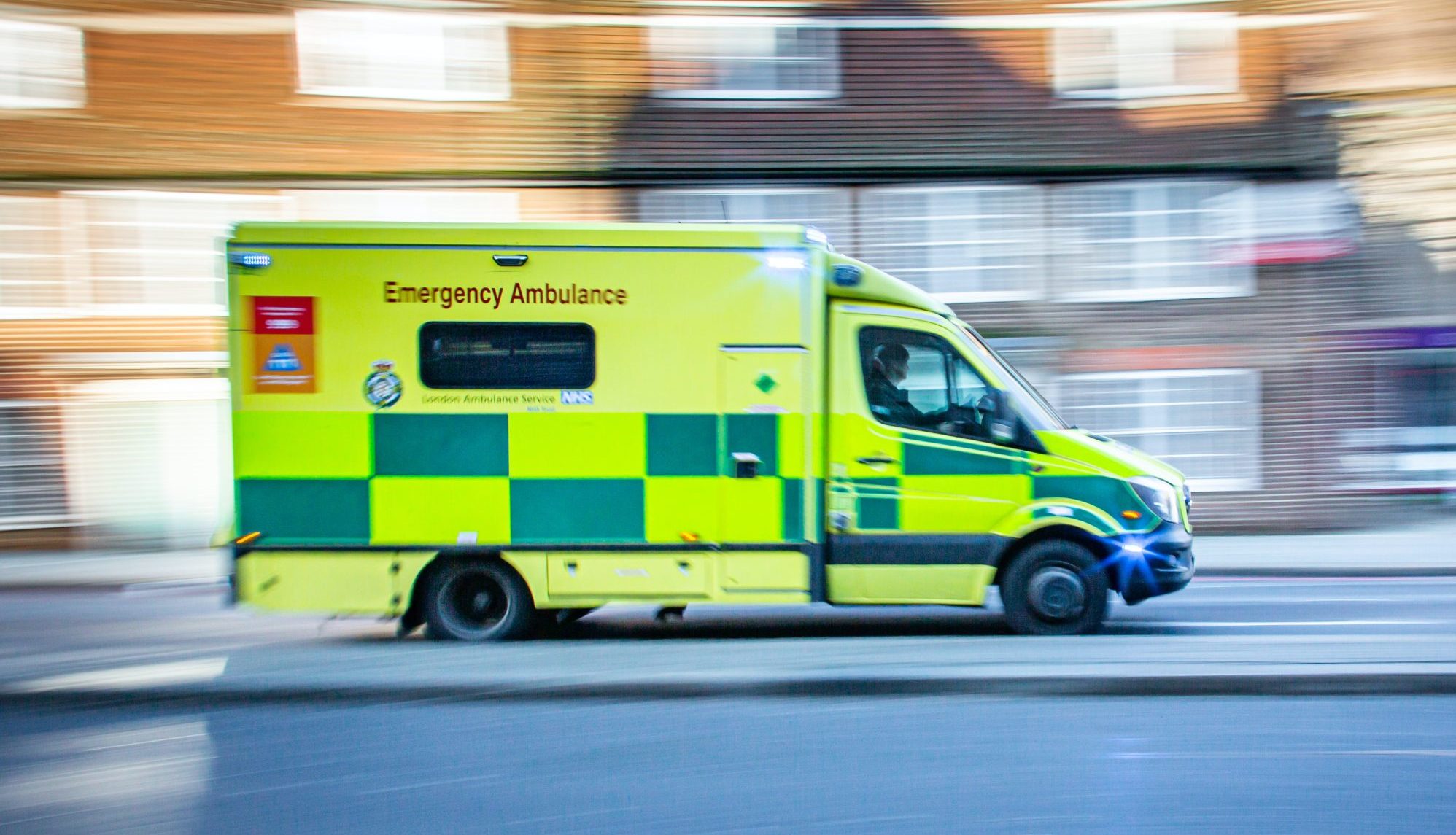 Nada Khan is an Exeter-based NIHR Academic Clinical Fellow in general practice and GPST4/registrar, and an Associate Editor at the BJGP. She is on Twitter: @nadafkhan
Nada Khan is an Exeter-based NIHR Academic Clinical Fellow in general practice and GPST4/registrar, and an Associate Editor at the BJGP. She is on Twitter: @nadafkhan
The NHS is clear on how the health service should respond to an emergency. In a life-threatening situation, the target ambulance response time is seven minutes. In an emergency that needs rapid assessment and treatment (what the ambulance services calls a Category 2 incident), the average ambulance response time should be 18 minutes.
Unfortunately, as a recent report from the Nuffield Trust describes, ambulance response rates have deteriorated significantly since May 2021.1 Instead of 18 minutes for a Category 2 incident, the average response rate in June 2022 was 51 minutes.2 That is a long time to wait for an ambulance in stroke, heart attack or sepsis where time is of the essence, especially when the best outcomes come from rapid interventional procedures to limit ischaemic damage. The wait times for Category 3 calls (tags response time of 2 hours), which are classified as urgent but not life-threatening (think, an elderly person falling over at home) have suffered even further with an average wait time of over 2 hours and 50 minutes hours, with a 90th centile response standard of over 7 hours.
In the face of system pressures, staff on the ground have limited influence over social and community care, and alone are ‘unable to resolve the challenges relating to the discharge of patients to the right place of care’.
Ambulance wait times matter. Data from a German registry analysis demonstrated that each extra minute of ambulance wait time was associated with a 5% reduction in the probability of survival following an out of hospital cardiac arrest, results that have been replicated in a Swedish study that found shortening ambulance wait times was associated with a reduction in 30-day mortality.3,4
The causes of these increased waits are complex and are a symptom of pressures within the NHS and social care system. Waits for social care mean it is difficult to discharge patients from hospital, which means there is a lack of hospital beds, which means that A&E staff can’t get patients out of their department, and ultimately, paramedics queuing outside hospitals can’t hand their patients over to A&E staff. There is a strong correlation between ambulance handover delays and increasing ambulance response times.5 In the face of system pressures, staff on the ground have limited influence over social and community care, and alone are ‘unable to resolve the challenges relating to the discharge of patients to the right place of care’.5
BJGP Life has published reflections on physician burnout, but what about our paramedic colleagues? In a survey of ambulance staff in the north of England, more than 50% felt ‘burnt out’ and 87% had some degree of depersonalisation (including detachment and reduced empathy) towards their work; these feelings can impact staff retention.6 The parallels with the GP workforce crisis are dispiriting. With increasing pressure on the ambulance service it’s no surprise that paramedics are feeling overwhelmed.
The definitive solution will involve building stronger social care services and improving patient flow through hospitals, but that is a longer-term goal that requires the Department of Health and Social Care to address current failings in social care provision and improve flow out of hospitals. If ambulance wait times continue to be long, what research has been done into potential innovative, and short-term solutions? Avenues to improve care for patients calling for emergency services might include community interventions, approaches to ensure speedy handover of patients from ambulances to A&E departments, and thinking about how primary care can support patients waiting for ambulances.
In terms of community interventions, research has considered whether community responders can be deployed in the most life-threatening situations. In Germany, a study of alerting CPR trained volunteers to rapidly attend incidents showed a reduction in the resuscitation-free interval, but long-term patient outcomes were unclear.7 Similarly, the London Ambulance Service has partnered with the GoodSAM app, which alerts trained volunteers to nearby cardiac arrests. An early evaluation in out of hospital cardiac arrests showed that early response using the GoodSAM app was associated with improved survival, though the number of responses to alerts was fairly low and the study was not powered to find differences in survival.8 There is potential to further evaluate early response mechanisms in the most life-threatening situations, but volunteer services have not been studied in Category 2 or 3 emergencies.
When wait times for ambulances are long, would that change what a GP recommends in terms of how a patient should get to hospital in an emergency?
Paramedics need to be able to hand their patients over safely and rapidly to hospital teams. A letter to NHS and Ambulance Trusts from NHS England dated 15 July in light of the UK heatwave suggested the creation of pre-A&E observation areas to facilitate ambulance handovers within 30 minutes. This strategy might free up ambulance teams, but what is unclear is both how hospitals will magic up the space and staff to create these observation areas and the impact on patient outcomes of simply shifting the wait from inside the ambulance to inside the hospital.
When wait times for ambulances are long, would that change what a GP recommends in terms of how a patient should get to hospital in an emergency? I’m thinking of, for instance, an unwell child needing admission who we might want transported in an ambulance in case of an acute deterioration, but not waiting at home for 2 hours for said transport. Not surprisingly, I was unable to find any research evidence comparing safety outcomes with private transport versus ambulance to hospital; this would be an ethically challenging trial to run. The NHS might be clear about how the health service should respond to an emergency, but in the community, decisions will increasingly be made on the knife-edge of prognostication as GPs and patient balance the risks of deterioration against ambulance response times.
References
1. Ambulance response times. Nuffield Trust; 2022 4 May 2022.
2. England N. Ambulance quality indicators data 2022-23 2022 [Available from: https://www.england.nhs.uk/statistics/statistical-work-areas/ambulance-quality-indicators/ambulance-quality-indicators-data-2022-23/.
3. Burger A, Wnent J, Bohn A, Jantzen T, Brenner S, Lefering R, et al. The Effect of Ambulance Response Time on Survival Following Out-of-Hospital Cardiac Arrest. Dtsch Arztebl Int. 2018;115(33-34):541-8.
4. Holmen J, Herlitz J, Ricksten SE, Stromsoe A, Hagberg E, Axelsson C, et al. Shortening Ambulance Response Time Increases Survival in Out-of-Hospital Cardiac Arrest. J Am Heart Assoc. 2020;9(21):e017048.
5. Branch HSI. Harm caused by delays in transferring patients to the right place of care. June 2022.
6. Beldon RG, J. Burnout in frontline ambulance staff. Journal of Paramedic Practice. 2021;14(1).
7. Stroop R, Kerner T, Strickmann B, Hensel M. Mobile phone-based alerting of CPR-trained volunteers simultaneously with the ambulance can reduce the resuscitation-free interval and improve outcome after out-of-hospital cardiac arrest: A German, population-based cohort study. Resuscitation. 2020;147:57-64.
8. Smith CM, Lall R, Fothergill RT, Spaight R, Perkins GD. The effect of the GoodSAM volunteer first-responder app on survival to hospital discharge following out-of-hospital cardiac arrest. Eur Heart J Acute Cardiovasc Care. 2022;11(1):20-31.
Featured image by Ian Taylor on Unsplash






